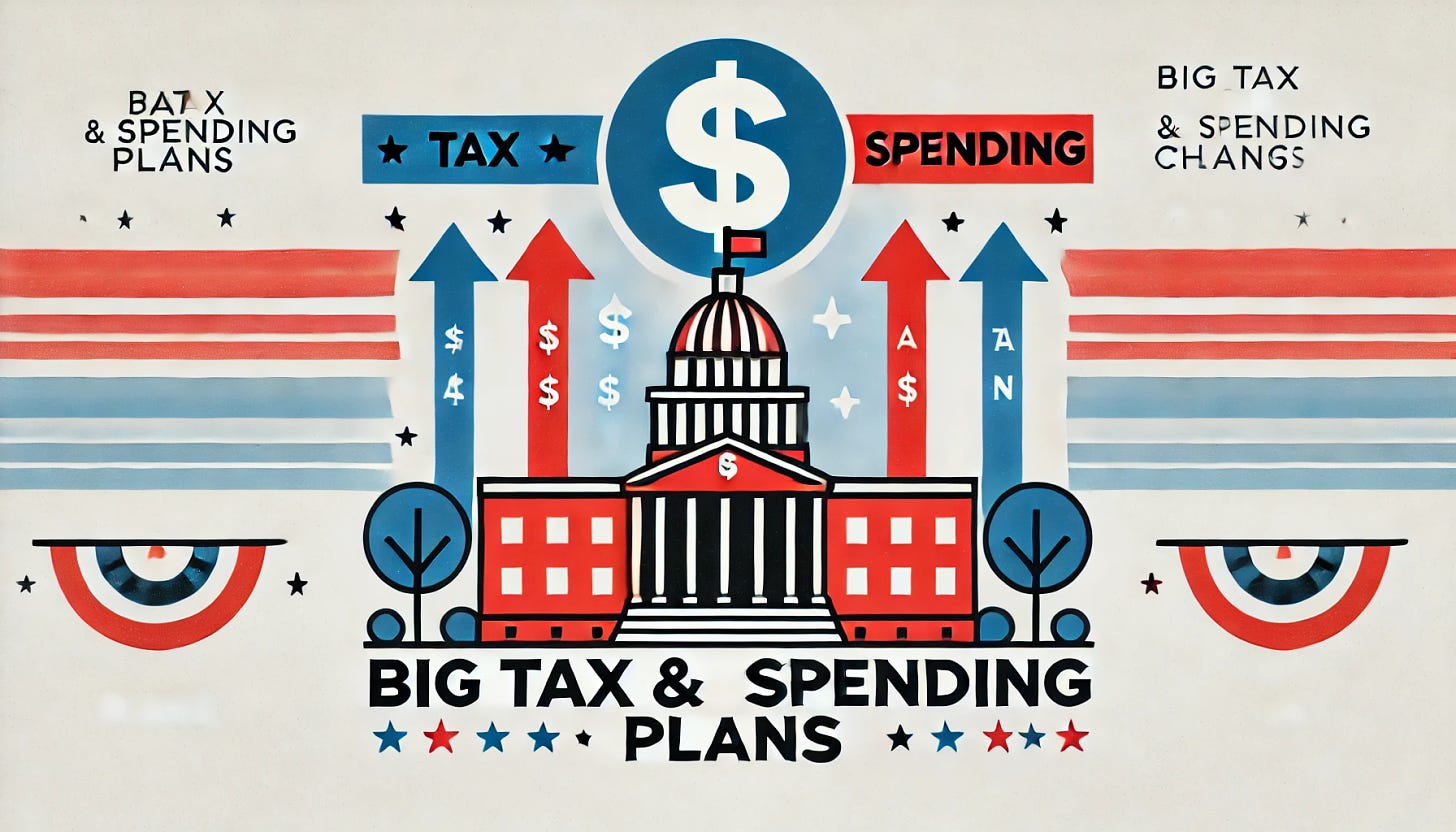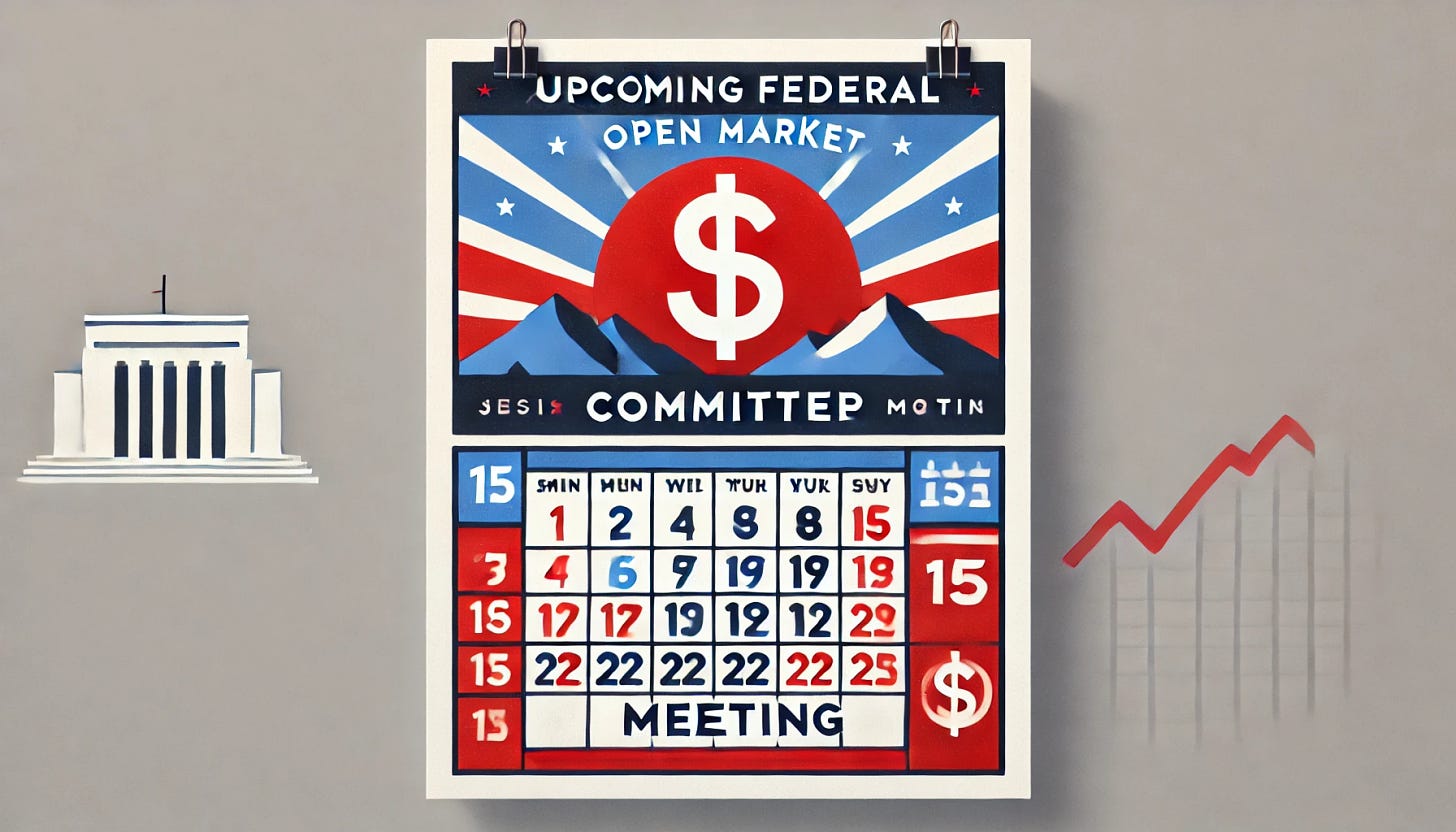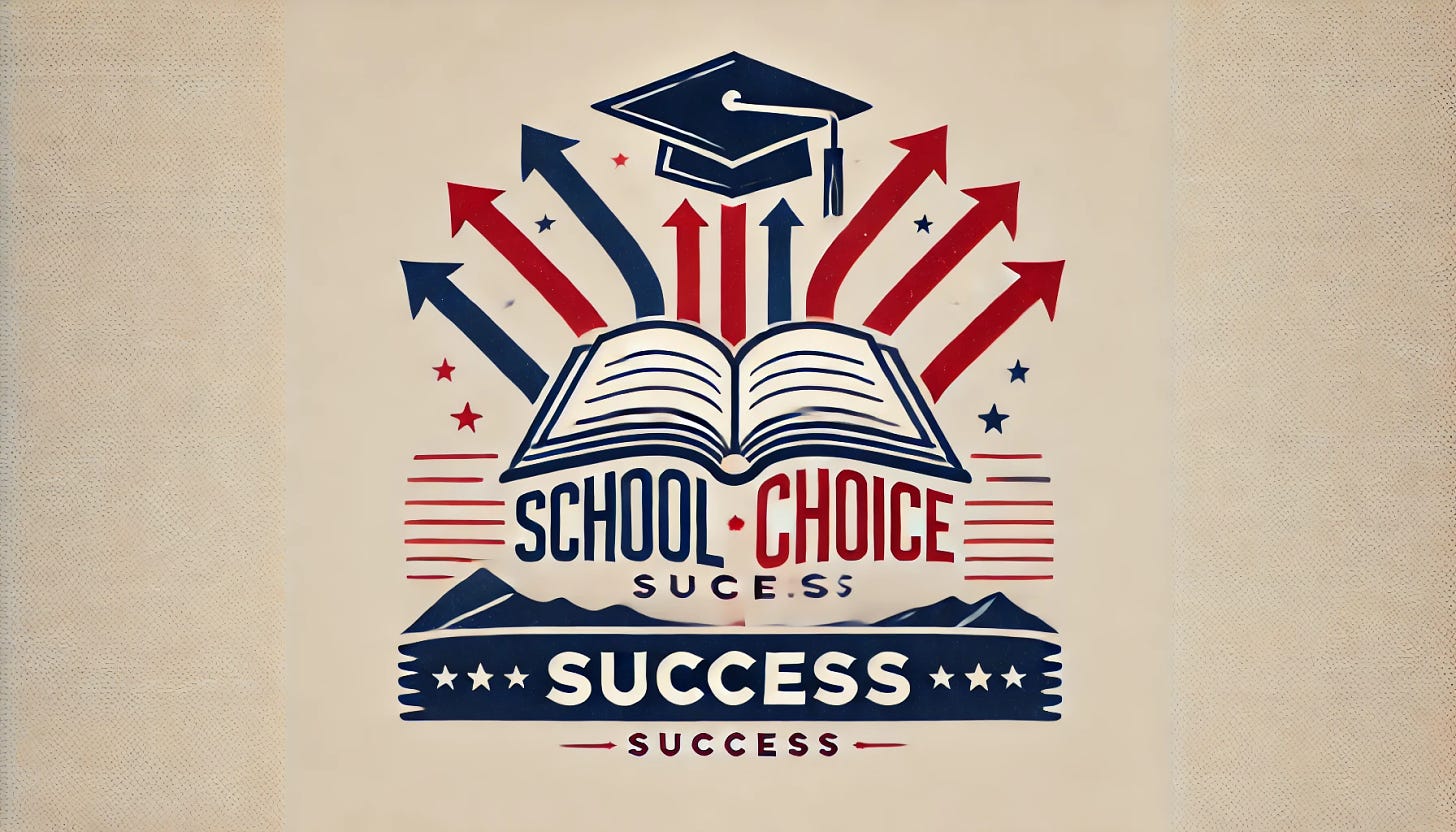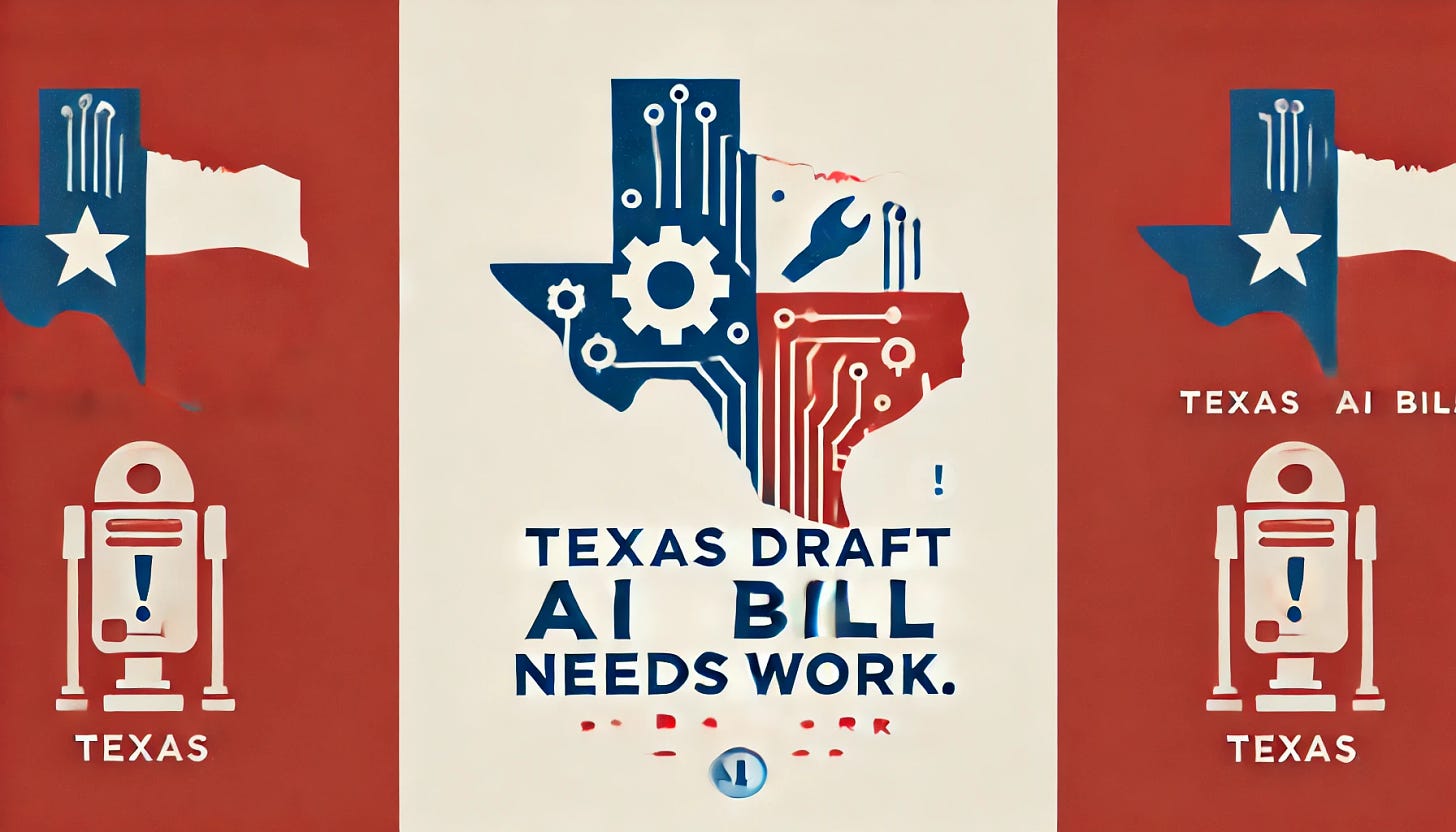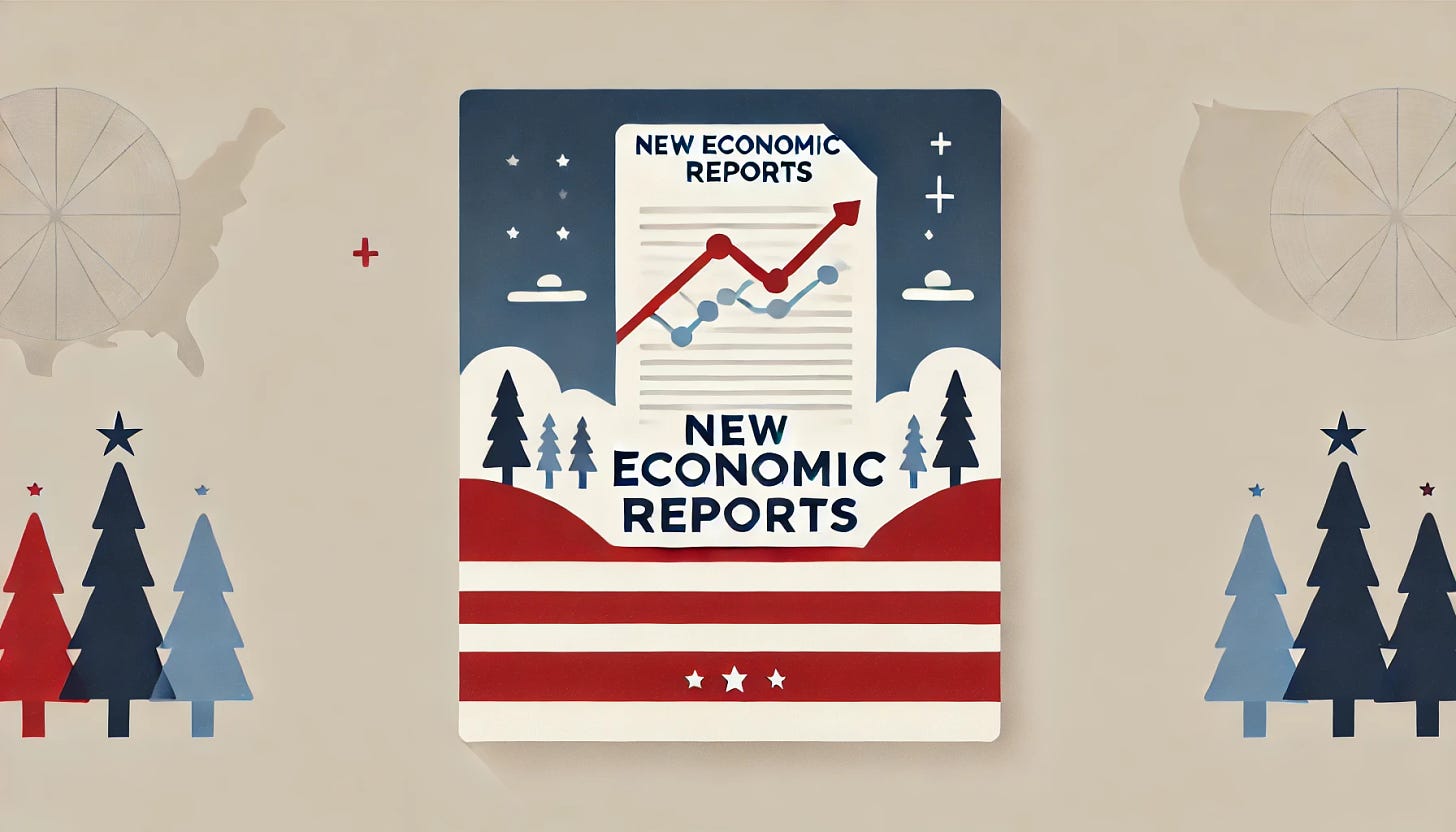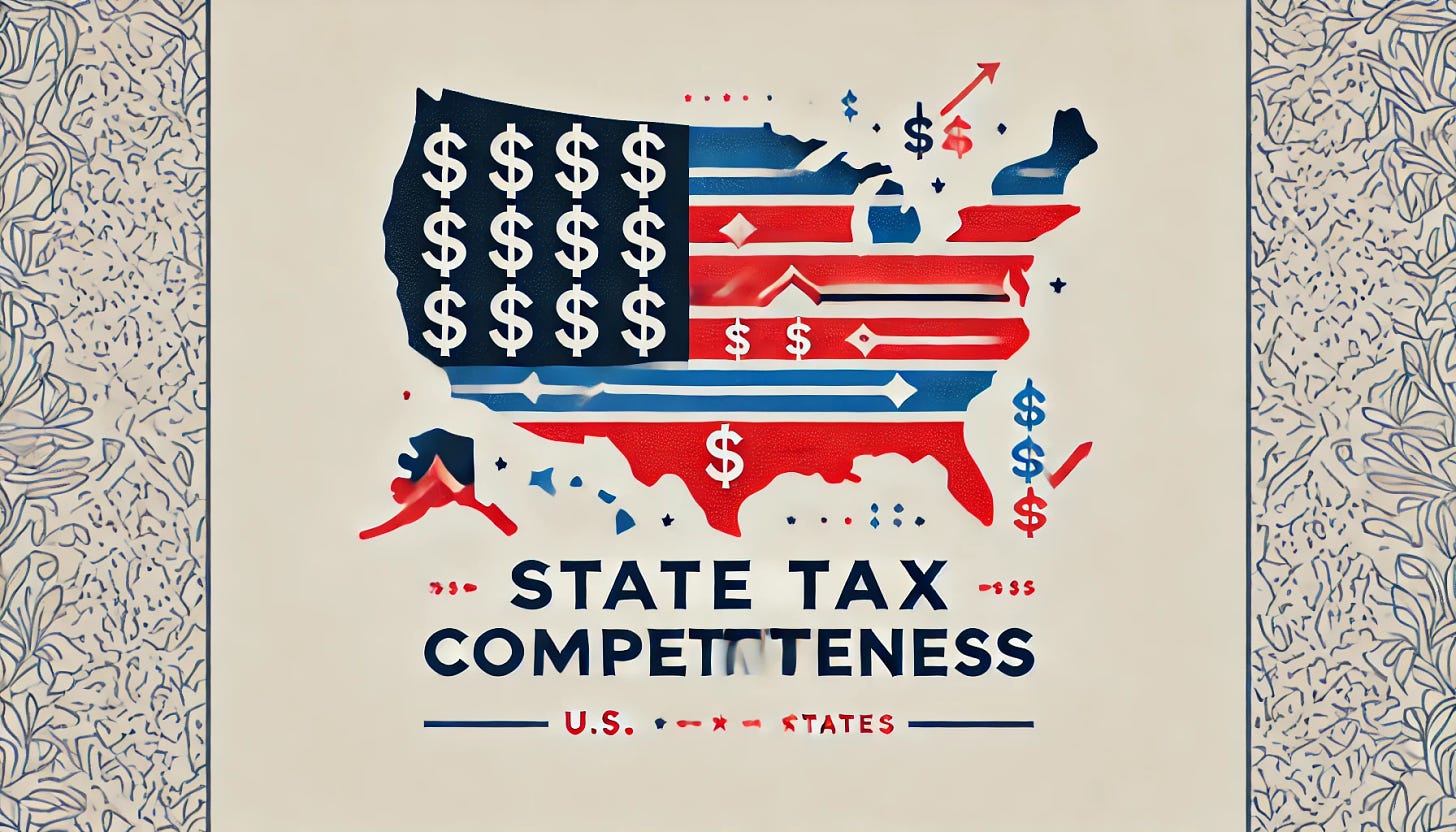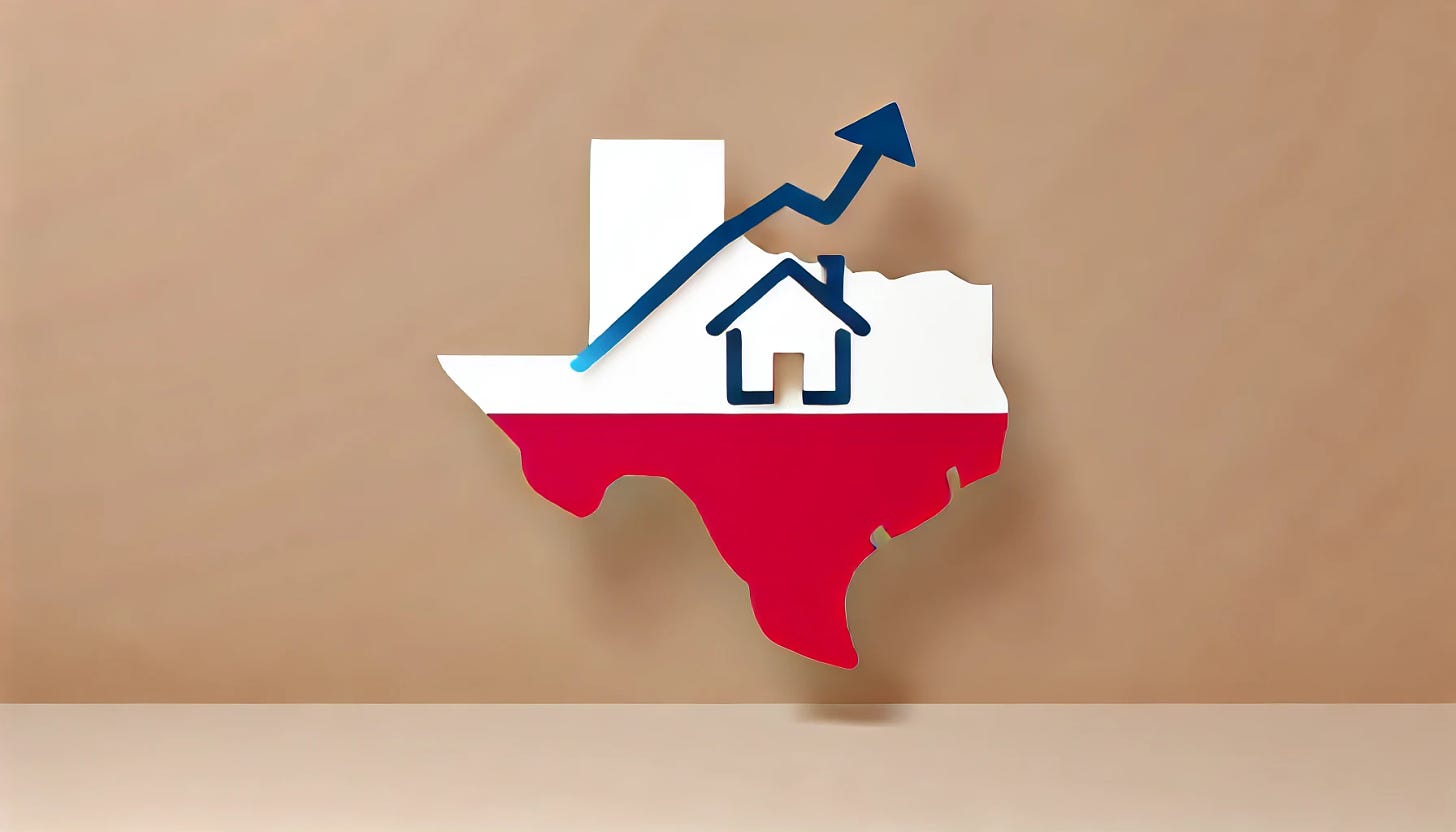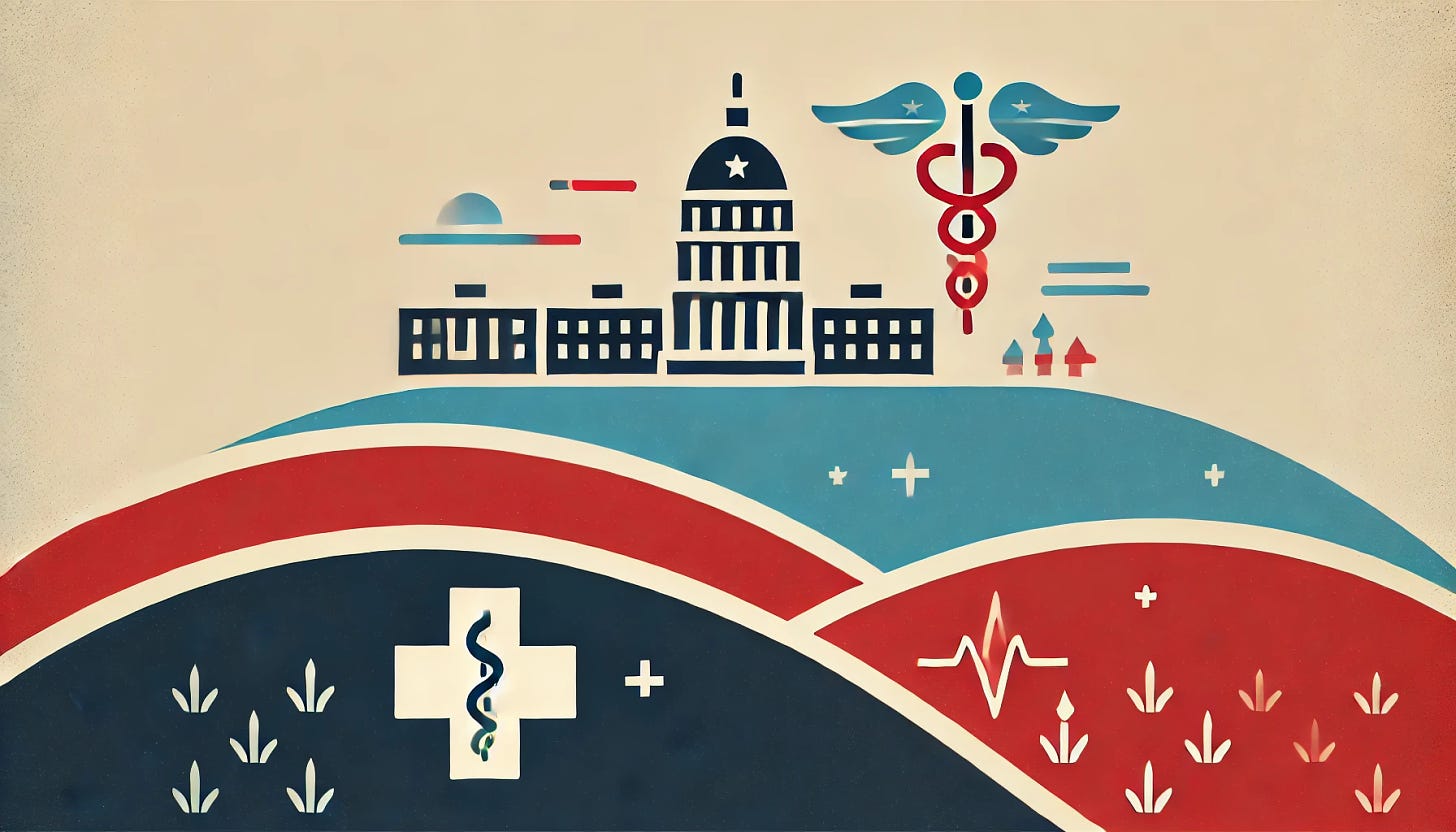309. Election Impact On Your Wallet | This Week's Economy Ep. 85
Exploring Trump’s Economic Blueprint, School Choice Success, and State-Level Economic Trends.
Hello Friends!
This week's update breaks down major policy proposals and economic shifts shaping the future. Trump has proposed eliminating federal income taxes in favor of tariffs—a radical move that could shift how Americans are taxed and how revenue flows. I discuss Elon Musk’s pledge to cut $2 trillion in government spending alongside these tax changes. Also on the agenda are updates on Federal Reserve actions, Texas’s AI draft bill, and state competitiveness reports, underscoring the effects of tax and spending decisions on economic stability and growth. Watch the episode on YouTube below, listen to it on Apple Podcast or Spotify, and visit my website for more information.
BIG TRUMP TAX & SPENDING PLANS
In the News:
During the election, Trump has proposed several tax exemptions, but his latest plan was the most sweeping: he aimed to eliminate federal income taxes and replace them with tariffs. At a recent campaign rally, Elon Musk announced he would join a Trump administration to cut $2 trillion in government spending as part of a task force focused on reducing government spending. Sources: CNN, CNBC, and Quartz
My Take:
Cut Government Spending: It’s encouraging to see Elon Musk focusing on curbing government overspending, though Trump must get on board. Our nation’s oversized budget increases taxes, strains the productive private sector, and drives inflation, burdening American taxpayers and businesses. Cutting back on excessive spending and addressing the federal deficit are critical steps to helping control inflation and support economic growth.
Tax Cuts & Tariffs: American families have seen significant benefits from the Tax Cuts and Jobs Act of 2017, which reduced the cost of work and investment. But pushing tax cuts in favor of tariffs is a mistake. Tariffs are taxes on imports paid by Americans, thereby driving up prices of final goods for consumers and primarily intermediate goods for businesses. While tax cuts put more money into Americans’ pockets, tariffs risk offsetting these gains by increasing the cost of goods—particularly concerning given broader inflationary pressures.
Better Solution: To address today’s economic challenges and support American families and businesses, Congress must rein in excessive spending and reduce the federal deficit, contributing to inflation and rising prices. Additionally, the Federal Reserve should address its $7 trillion balance sheet. The focus must shift to pro-growth, market-driven, rules-based reforms that empower Americans to prosper.
Related:
UPCOMING FOMC MEETING
In the News:
The Federal Open Market Committee will meet on Wednesday and Thursday (November 6-7), with Fed Chair Jerome Powell holding a press conference afterward. Many economists anticipate a 25-basis-point interest rate cut. Source: Reuters
My Take:
Inflation Control Must Be the Fed’s Priority: The Federal Reserve’s primary responsibility under its control is managing inflation—ongoing elevated balance sheet and interest rate cuts risk worsening inflation and further eroding families’ purchasing power.
Avoiding Past Policy Errors: The recent 50-basis-point rate cut, bringing the federal funds rate to a range of 4.75% to 5%, mirrors policy mistakes from the late 1970s, when the Fed’s premature easing fueled even higher inflation. That era saw the Fed under pressure to stimulate growth, resulting in a cycle of inflationary spikes that are best avoided now.
Better Course of Action: The Fed should pause rate cuts and focus on reducing its balance sheet more aggressively. Additionally, it should call on Congress to rein in spending to help absorb the excess liquidity fueling inflation. If they fail to act decisively, we risk an inflationary spiral reminiscent of the 1970s—a policy failure Americans cannot afford.
Related:
SCHOOL CHOICE SUCCESS
In the News:
A new report from the Progressive Policy Institute highlights the success of school choice, specifically showing how charter schools are helping level the academic playing field for low-income students. The study found that in ten cities where charter school enrollment exceeded 33%, student performance began closing the gap with statewide averages by 25-40%. Source: Fox News
My Take:
School Choice Drives Competition: According to the report, the growth of charter schools has created a positive competitive dynamic with traditional public schools. This increased competition consistently boosts quality as school choice programs improve student performance, graduation rates, and overall satisfaction. Additionally, teachers may benefit, with some seeing salary increases of up to $28,000 a year, reflecting the value of their work.
Benefits for Low-Income Students: Children from low-income families often benefit the most from school choice. By allowing families to choose the schools that best meet their needs, school choice ensures high-quality educational access for all children, regardless of socioeconomic status. But it should be available to everyone. Upper-income parents are getting a huge subsidy today to send their kids to government schools, so why shouldn’t they receive an ESA instead?
School Choice on the Ballot: Over 30 states have school choice programs, and more are considering related legislation. Colorado, Kansas, and Florida voters will see school choice measures on their ballot, while Texas plans to advance school choice legislation in the upcoming legislative session. This report shows that school choice can deliver significant benefits for American families, particularly low-income students.
Related:
TEXAS DRAFT AI BILL NEEDS WORK
In the News:
This week, Texas State Rep. Giovanni Capriglione (R) introduced draft legislation establishing a regulatory framework for artificial intelligence (AI). Modeled after Colorado’s law and the work of Connecticut State Sen. James Maroney (D), the bill would make Texas the largest state with a new framework. While well-intended, there are many concerns with the bill as it would prohibit AI-enabled discrimination in areas like banking, housing, and government services and hurt small business innovators with large penalties, thereby benefiting “Big Tech” with large barriers to entry. Source: Bloomberg Law
My Take:
Risk to Innovation: Texas’s thriving economy and growing tech sector make it a hub for business, where it has become the “Silicon Valley of the South.” Thoughtful AI legislation is essential to prevent obstacles that could stifle critical innovation.
Avoiding Regulatory Overreach: Effective AI policy should avoid regulating areas already covered by existing laws, requiring minimal new regulation. This draft bill raises concerns, but there’s time to make substantial improvements.
Better Approach: From my time in the White House, I saw Trump advocate against excessive AI regulation, favoring a market-driven approach. Texas lawmakers should follow suit, allowing markets to drive progress and remaining cautious about regulatory overreach. The ALEC model legislation on AI provides a good framework to consider. However, I’m not too fond of creating a new Office of Artificial Intelligence Policy, but it could be folded into an existing office without new resources.
Related:
NEW ECONOMIC REPORTS
In the News:
Last week, reports on U.S. GDP and job openings were released, showing 2.8% GDP growth while job openings fell to a 3.5-year low. Meanwhile, the personal consumption expenditures (PCE) price index increased 2.7% for inflation over the past year, excluding food and energy. Sources: U.S. News & World Report, CBS News and CNBC
My Take:
Job Openings Drop: Much of the decline in job growth was concentrated in the South, where Hurricanes Helene and Milton impacted local economies. Before the hurricanes, reports indicated significant economic growth in red states, with robust job creation, in contrast to economic stagnation in many blue states.
GDP Report: While some headlines highlight GDP growth, the Q3 report reveals the economic challenges Americans continue to face. Government spending surged by 5% on an annualized basis, yet real private GDP—which excludes government purchases and reflects productive economic activity—grew by only 1.95% in Q3.
PCE Inflation Remains Elevated: The core PCE inflation rate remains above the Federal Reserve’s 2% target, at 2.7% year-over-year. Persistent inflation reflects ongoing issues from congressional overspending and the Fed's monetary expansion, which will continue to pressure the economy and limit growth opportunities.
A Pro-Growth Path Forward: Low-tax, free-market policies offer a sustainable path to economic recovery. In contrast, heavy regulation and high spending threaten further job losses and stagnation. We need leaders committed to these pro-growth ideas to strengthen our economy and support American prosperity.
Related:
STATE TAX COMPETITIVENESS
In the News:
A new report from the Tax Foundation compares states on the five major areas of taxation. It provides a great overview of the burden of funding government spending in different ways. Source: Tax Foundation
My Take:
The Impact of Personal Income Tax: States ranked in the top 10 generally have no personal income tax, while those in the bottom 10 carry the highest marginal personal income tax rates.
Government Spending Matters: The top-ranking states also tend to have lower government spending, whereas the bottom-ranking states show the highest levels of government spending. This report reinforces that government spending heavily burdens citizens, resulting in higher taxes, more regulations, and lower economic growth.
The Best Path Forward: Research consistently highlights the importance of controlling government spending over raising taxes to support economic growth. Fiscal policies focused on spending restraint rather than tax hikes have fostered stronger, more sustainable economic growth.
Related:
SOARING TEXAS HOUSING COSTS
In the News:
Despite Texas's booming economy, residents face record-high home prices and rents due to a severe housing shortage. Source: The Texas Tribune here and here
My Take:
Expand Housing Supply: Texas urgently needs more housing to alleviate the growing supply-demand gap driving up costs. However, local regulations, restrictive zoning laws, and complex permitting processes slow down new construction, limiting supply and pushing prices higher.
Streamline Regulations to Boost Supply: Easing regulatory and permitting burdens will accelerate housing development. Increasing housing availability is the only sustainable way to reduce prices and improve affordability across Texas.
Inflation Worsens the Crisis: Inflation, driven by federal deficit spending, further raises the costs of building materials and labor. Fiscal reforms are essential to control government spending, reduce inflation, and restore the purchasing power needed for families to afford homes.
Related:
U.S. HOUSE SPEAKER PLEDGES TO REFORM HEALTH CARE
In the News:
House Speaker Mike Johnson has pledged to overhaul the Affordable Care Act (ACA) if Trump wins the presidency, marking health care reform as a top policy agenda item. Discussions about the 2010 healthcare law, commonly known as Obamacare, often arise in the final stages of election cycles. Source: CNN
Dr. Ginn’s Take:
The Need for Health Care Reform: Access to affordable, high-quality health care remains critical. Healthcare affordability in the U.S. has hit new lows since 2022, with no improvement.
An Expensive Health Care System: The U.S. spends a staggering $4.8 trillion annually on health care, yet over half doesn't go directly toward patient care. The ACA alone has cost $2.6 trillion, while Medicare-for-All is estimated to reach $40 trillion.
A Path Forward: Reducing government over-regulation and empowering patients with greater financial and medical control is essential. This approach will align incentives, curb bureaucratic waste, and make health care more affordable and accessible for millions of Americans.
Related:
Thank you for reading this week’s Weekly Prosperity Pulse! Stay tuned as I break down key economic developments and share insights into national policies promoting prosperity. Be sure to share with family and friends. For more insights, visit vanceginn.com and get a paid subscription to my Substack newsletter at vanceginn.substack.com today so you receive these insights in your inbox. God bless you, and let people prosper.
Keep reading with a 7-day free trial
Subscribe to Let People Prosper to keep reading this post and get 7 days of free access to the full post archives.




